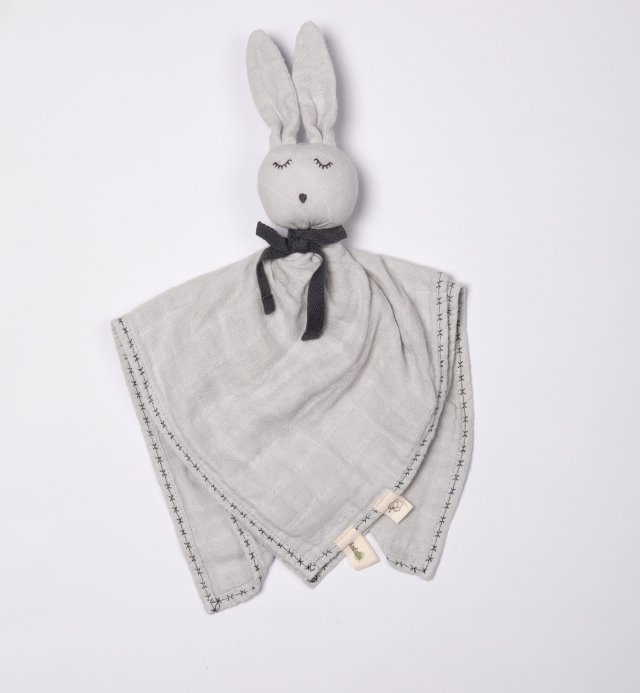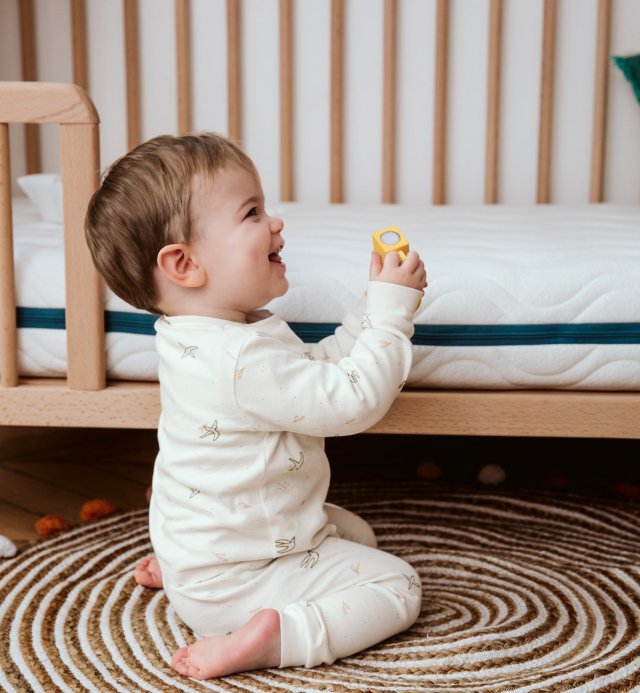Belly-sleeping for a baby is strictly forbidden by all specialists. Therefore, during the first year of life, the best way to put your baby to sleep is on his back. Putting your baby to sleep on his stomach presents a number of risks, including sudden infant death syndrome (SIDS), one of the most dreaded by parents. Find out which sleeping positions are the most recommended, and clear up any doubts you may have about the age at which your baby can safely sleep on his stomach.
Why shouldn't babies sleep on their tummies during their first months?
All specialists and the French National Authority for Health (HAS ) agree on one point: the stomach sleeping position should be avoided. It's essential to put babies to sleep on their backs to guarantee safe sleep and prevent sudden infant death syndrome (SIDS ).
Some experts also point out that this position can block the airways and increase the likelihood of aspirating expelled air. If this happens constantly, oxygen levels are reduced and carbon dioxide levels increase.
Even during a nap, if you think it's going to be a short one, it's not advisable to sleep on your stomach.
In fact, lying on the stomach carries the risk of burial and hyperthermia, which is why it is formally inadvisable to put pillows, stuffed animals or toys in the bed of children under one year of age.
It's also not advisable to put your baby to sleep on his or her side, as this position is not stable and the child tends to roll over onto his or her stomach.
What to do if your baby sleeps on his tummy?
First of all, don't worry. It's normal for your child to move around and find himself in this position. If this is part of his sleeping routine, observe his position from time to time, and if you find your baby on his tummy or side at any time, simply put him back on his back. As children grow, they change position on their own, but it's best to avoid this position until they're a year old.
The safest sleeping position for your baby in the first year of life is on his back.
When can a baby sleep on his stomach?
In fact, lying on the tummy while awake and under supervision offers advantages such as preventing plagiocephaly (flat head) and relieving colic. It also helps strengthen head and neck muscles.
That's why, whenever possible, we recommend positioning your baby on his or her tummy while awake and under your supervision.
- It's a good idea to get your child used to playing in this position for short periods (no more than 15 minutes) several times a day from the very first months.
- This posture will help them learn to lift their head.
It's not until your baby is 6 to 8 months old that he's strong enough to roll over on his own in bed. This shows that he has sufficient muscle tone to lift his head and change position on his own. But in any case, it's important to always put your baby to sleep on his back, without a pillow and in a sleeping bag as a precaution, at least until he's a year old.
This is the only accessory recommended for this stage. If you don't know what a sleeping bag should look like, just ask us. At Kadolis, we can recommend the best options for your baby, always in organic cotton, for a soft, natural and safe sleep.
The sleeping bag has many advantages:
- It allows your baby to move freely inside.
- Ensures an ideal temperature and no risk of uncovering.
Did you know that to sleep well, your baby must be neither too hot nor too cold? That's why our sleeping bags adapt to every season and room temperature.
How should a baby sleep in winter?
Safe sleep for a newborn is essential whatever the season. Here are some general recommendations to ensure safe winter sleep for a newborn:
- Place the baby face up: in winter, it's always essential to control the baby's position, to prevent him or her from rolling over and thus reduce the risk of Sudden Infant Death Syndrome (SIDS).
- Comfortable clothing, but not too warm: don't overdo it, as the baby may sweat, catch cold and catch a cold. Baby needs to be comfortable, in clothes that allow him or her to move around and that aren't too tight.
- No sheets or blankets: avoid using loose blankets in the crib, as they present a suffocation risk. Instead, use sleeping bags or secure blankets specially designed for safe sleep.
- Constant monitoring: pay close attention to your baby's needs, and adjust his or her clothing or room temperature if necessary. If baby seems hot or cold, adjust the temperature accordingly.
- Adequate hydration: make sure your baby is well hydrated, as dry heating air can increase fluid loss.
¿Como saber si un bebé tiene frío por la noche?
There are a number of ways to tell if your baby is cold at night, the best of which is to touch his or her body to feel the temperature. It's important not to rely on your baby's hands or feet, because in the first few months of life, they are constantly developing and don't regulate their temperature as quickly as adults. This is why we can feel that their hands and feet are cold, but that their body is warm.
This is why the most appropriate areas are the forehead or face and chest. If they're cold, the baby is probably cold. If they're warm, the baby's fine. If he's sweating a lot, he's hot.
3 tips to put your baby safely to sleep
- For the best sleep, we recommend keeping the bedroom temperature between 20°C and 22°C.
- Baby's mattress should always be free of blankets, pillows and toys. at certain times, soft toys can be used, provided they are light, ultra-soft and safe. It's difficult to choose the right toy for your baby, but it's best if it's small to medium-sized and machine-washable (at 30° minimum).
- The American Pediatric Association (AAP) also recommends that your baby sleep on a firm mattressmade of highly breathable material to allow air to circulate freely and regulate temperature.
Thanks to these specialist recommendations, we hope to have answered all your questions about how to ensure your baby sleeps safely. The peace of mind you'll feel is the best reward of all.


















Leave a comment